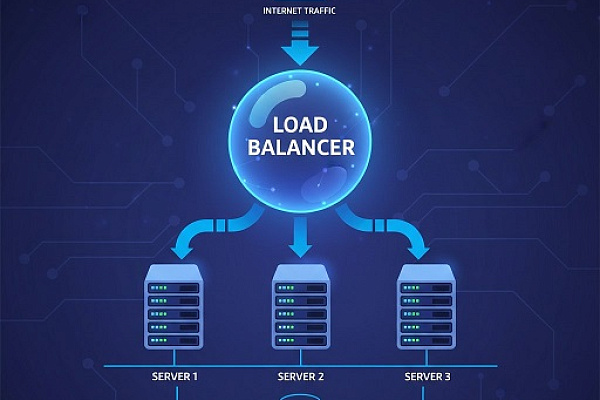Losing your customer database, source code, or financial records is catastrophic, not merely an "inconvenience." A single failure can cripple a company. When every minute of downtime translates to lost revenue and reputation, you need an ironclad guarantee. Cold backup provides this ultimate assurance: your data remains secure and recoverable, even when all other systems fail.
What is a cold backup?
A cold backup is an archive of your data that resides separately from your primary systems and remains disconnected from the network. Typically, this involves external drives or specialized "cold" cloud storage, where data is written once and stored until needed.
There is no background activity or real-time updates. You create the copy, store it securely, and can forget about it until a major incident occurs.
The key characteristic of a cold backup is that it is not designed for instant system recovery. It is about peace of mind rather than speed. If your entire infrastructure fails, you have a final, untouched copy to fall back on. Think of it as an insurance policy: you hope you never need it, but when disaster strikes and all other defenses are breached, it is your ultimate recourse.
The advantages of cold backup
Cold backup offers several key benefits that make it a reliable pillar of any data protection strategy.
Maximum Protection Against Cyberattacks
Today, malware is a primary threat to businesses. It can take down an entire IT system in minutes, leaving a company locked out of its own data. However, a cold backup is physically isolated from your operational network. Malicious software simply cannot reach it. Even if your primary servers are compromised or fully encrypted, the copy in cold storage remains untouched.
Lower Operational Costs
Long-term data storage can lead to significant expenses for a company. Unlike "hot" or "warm" copies that require constant resources, a cold backup places almost no load on your active systems. For companies with large data volumes, this translates into substantial savings.
Regulatory Compliance
Data retention is often a matter of strict legal compliance. For instance, central bank regulations mandate that FinTech companies keep records of transactions and client data, while data protection laws require healthcare institutions to archive patient records.
In these and other scenarios, cold backup helps to meet legal requirements and virtually eliminates the risk of data loss. This approach not only prevents data breaches but also helps you avoid hefty fines for non-compliance, making data archiving a tool for legal protection.
Infrastructure Independence
Cold backups are stored outside the primary infrastructure — on tape libraries, external drives, or dedicated cloud storage services. This means business is not tied to a specific server or provider. Even if your primary hardware fails, a backup remains accessible. It is an extra layer of insurance against hardware malfunctions or software bugs.
Implementing a cold backup strategy
Simply creating a copy and stashing it away is not enough. A systematic approach is what transforms a cold backup into a reliable business asset.
Categorize Your Data
To optimize your storage costs and performance, first categorize your company's data into three tiers:
- Business-Critical: Data essential for daily operation, such as customer databases and financial records. This tier requires the fast recovery of hot or warm backups.
- Operational: Actively used data like log files and current projects. While important, a temporary loss won't halt operations entirely.
- Archival: Rarely accessed records like communication histories and completed projects. This is the primary use case for cold backup, balancing long-term accessibility with significant cost savings.
Five steps to implementation
1. Select Your Storage Medium
Your choice should balance data volume, budget, and recovery speed.
- Tape Drives: Offer a durable, cost-effective solution for terabytes of data, though they involve slower recovery and specialized hardware.
- External HDDs/SSDs: Provide a simple plug-and-play option for small to medium volumes, but their limited lifespan (3-5 years) and physical vulnerability are significant drawbacks.
- Cloud Cold Storage: Often the most versatile choice, providing scalable, pay-as-you-go capacity with built-in security and geo-redundancy. When evaluating providers, prioritize reliability and a clear understanding of their service features. For businesses seeking a robust solution, exploring a specialized enterprise cloud backup service can streamline the entire process.
2. Determine Backup Frequency
Your backup schedule should reflect your business's scale and data criticality. A startup might suffice with weekly backups, while a large enterprise may need daily archiving. The key is to automate this process to ensure consistency and eliminate human error.
3. Restrict Access
Limit cold backup access to a minimal number of authorized personnel, such as system administrators. This "principle of least privilege" drastically reduces security risks.
4. Test Your Recovery Process
A backup is only as good as your ability to restore it. Conduct quarterly recovery drills to verify data integrity and confirm that restoration can be completed within your acceptable timeframe.
5. Automate the Entire Workflow
Instead of relying on manual efforts, use scripts, schedulers, or dedicated services to automate the backup lifecycle. This removes the risk of human forgetfulness and guarantees your data is consistently and reliably protected. Leveraging a professional solution like Cloud4Y's automated cloud backup is an effective way to achieve this with minimal administrative overhead.
Best practices for a resilient backup strategy
A reliable backup system is your best defense against data loss. By integrating the following practices, you can transform routine archiving into a powerful recovery capability.
- Adhere to the 3-2-1 Rule: Maintain three copies of your data on two different types of media, with one copy stored off-site or in a separate cloud. This layered approach safeguards your data from localized disasters, hardware failure, and cyberattacks.
- Prioritize Data Encryption: Before moving data, especially to cloud storage or portable drives, ensure it is encrypted. This critical step renders your information useless to unauthorized parties, even in the event of physical theft or a security breach.
- Implement Data Tiering: Not all data is equally urgent. Classify your information by its importance, backing up mission-critical data (like customer databases) more frequently than archival material. This tiered strategy optimizes both performance and cost.
- Keep a Detailed Backup Log: Meticulously document every backup creation, verification, and recovery test. This log provides a clear, auditable trail that prevents confusion, simplifies troubleshooting, and instantly confirms the status of your backups.
- Integrate with Your Disaster Recovery Plan (DRP): Your cold backup is a key component of your broader business continuity strategy. Embed it within your DRP by defining clear Recovery Time Objectives (RTOs), incident response procedures, and assigned roles. This ensures your archived data is a readily activated asset, not just a static collection of files.
Conclusion: Your Unbreachable Safety Net
Cold backup remains a critical, practical tool for surviving cyberattacks and system crashes. It's your last line of defense when all other systems fail. Setting one up requires foresight, but it grants invaluable peace of mind. Make it a priority to implement your strategy now—it's the definitive safety net your business can always depend on.




